This post may contain paid links. See more info on my privacy page.
My easy and versatile Prime Rib Rub recipe is done in minutes using five simple ingredients! You will be amazed by how much flavor this prime rib seasoning adds.
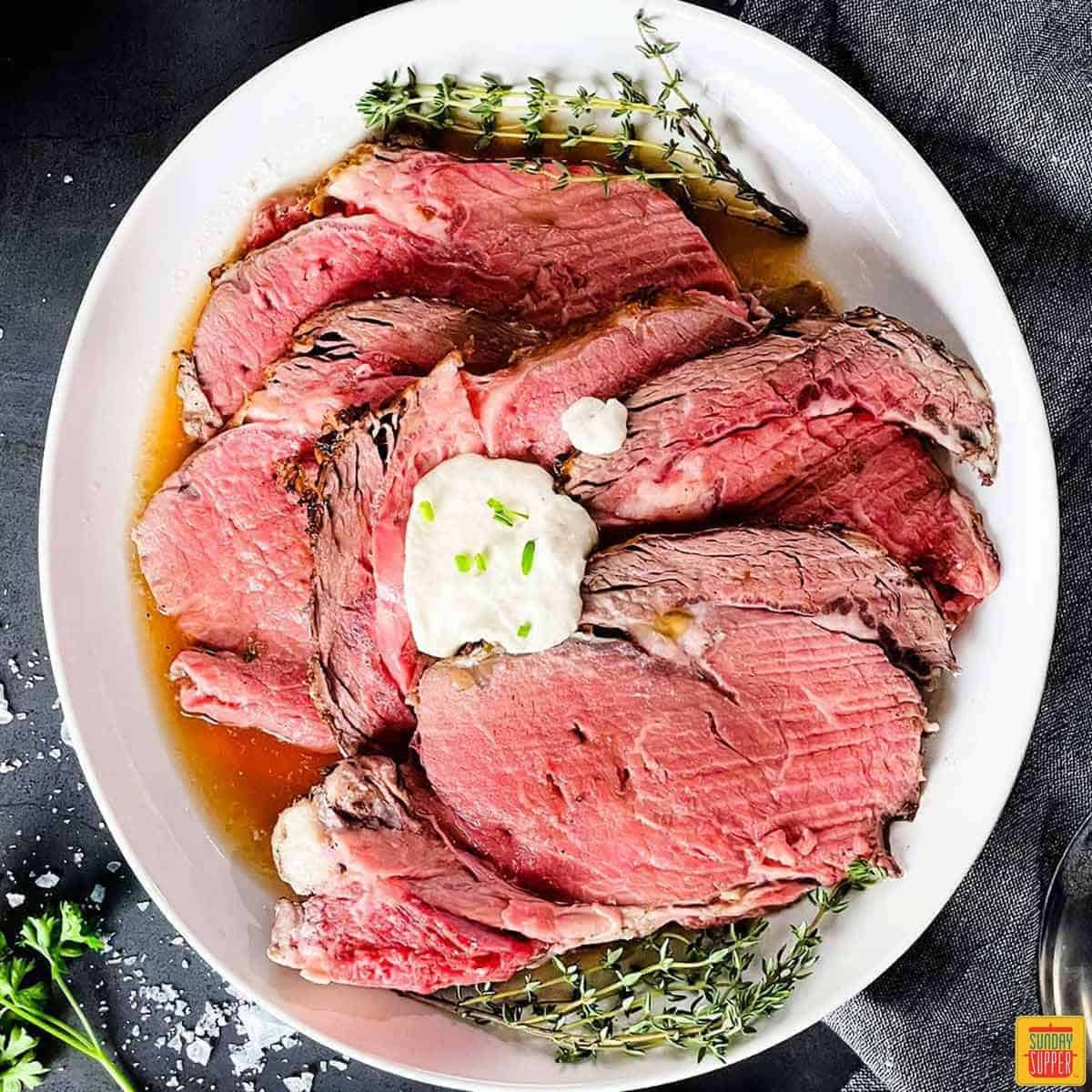
Jump to:
Prime Rib Rub Recipe
If there's one meal I look forward to more than any other during the holidays, it's my homemade prime rib. I love cooking prime rib, and have made it with every method, from smoking, to grilling, air frying, pressure cooking, roasting. I've even made dry aged rib roast!
One key component to cooking prime rib perfectly is the seasoning. It's important to emphasize the flavor of the prime rib without overpowering it, so using the right prime rib rub is a must!
My prime rib seasoning recipe is simple: adding a ton of flavor without taking anything away from the meat itself. It helps the prime rib develop a tasty, buttery crust, too!
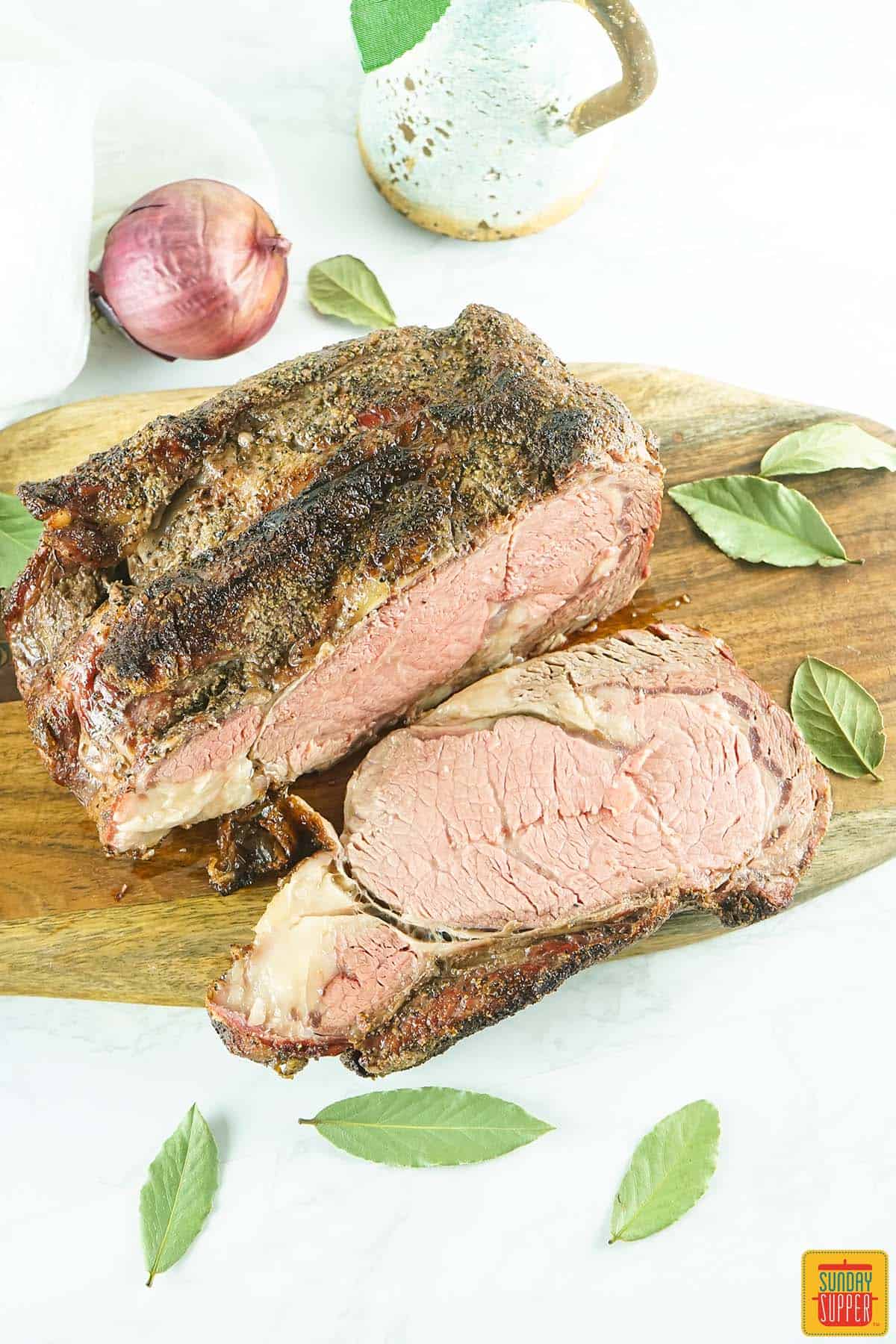
Prime Rib Seasoning Ingredients
- Butter: I use salted butter, but you can use unsalted butter if you prefer.
- Garlic Powder: This is used to add a garlicky flavor without the risk of burning fresh garlic.
- Rosemary: Combined with thyme, rosemary is the perfect herb for pairing with prime rib.
- Thyme: Along with rosemary, thyme adds excellent flavor to prime rib without removing the beef's natural taste.
- Pepper: Freshly cracked black pepper works best.
Note on salting prime rib: Before applying the butter rub, season your entire prime rib with kosher salt. Allow it to rest in the refrigerator, uncovered, for one hour. This will bring out the most flavor and moisture in your prime rib.
How to Season Prime Rib
- Soften the butter on the counter or by setting it under a hot glass, and chop the herbs. When softened, combine butter, garlic powder, herbs, and pepper in a bowl and mix to combine.
- Spread the butter rub over the meat, making sure to cover all sides of the roast.
- Prepare the roast, and serve! Save any spare rub (that hasn't been in contact with the meat!) for spreading on toast, vegetables, and more!
Ready to truly up your Prime Rib game? Then it's time to try Dry Aged Prime Rib! It's easier than you think and unbelievably deluxe.
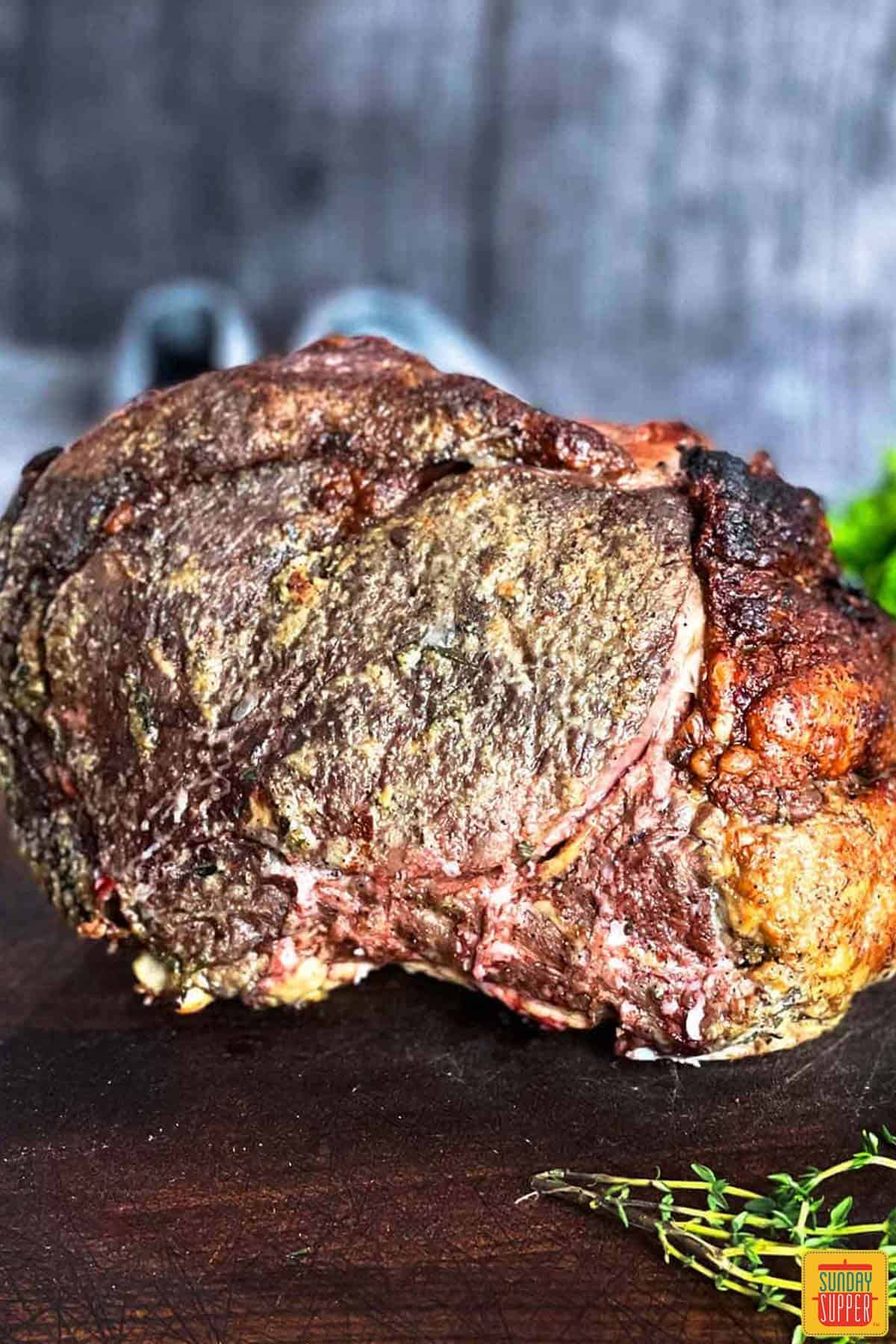
Prime Rib Seasoning Recipe Tips
- Fresh herbs are ideal, but if you're in a pinch, dried herbs will work too! Just limit the amount to about half, as dried herbs are more potent, and too many can quickly become overpowering.
- I prefer to use salted butter for a more flavorful rub. If using unsalted butter, add a little salt to the mix.
- Make extra, and set aside a portion to store. This butter rub is essentially herb butter, and tastes incredible used in all sorts of ways! I like to add a little to the pan before cooking up sandwiches or add it on top of mashed potatoes.
- Spare butter can be stored in a container in the fridge or wrapped up into a log shape using plastic wrap.
- Feel free to mix and match the herbs in this rub. You may prefer more thyme, more rosemary, or a mix of sage!
- You can use this rub with any method of cooking prime rib, from the oven to sous vide.
- Additionally, you can use this rub for bone-in prime rib or boneless.
- Use a meat thermometer when cooking prime rib to measure the internal temperature. For medium rare, aim for 135°F.
- With any prime rib, you can collect the drippings from the roasting pan to make an au jus. It's even more delicious when you use this butter rub!
Prime Rib Seasoning Rub FAQ
More than anything, it's important to be reserved when seasoning prime rib. The meat itself is incredibly rich and flavorful, so the best way to season prime rib is to only lightly enhance the flavors. This is best done with salt, pepper, butter, and herbs- just enough to brighten the rich beef!
In my opinion, the best flavor is achieved by seasoning the prime rib twice; first with a simple dry rub of salt, pepper and garlic powder, and then a second time after the prime rib has been partially cooked by using a butter rub with herbs.
Prime rib is best seasoned before and during cooking. Before it's cooked, season the prime rib with salt; this should be done either 40+ minutes before cooking it, or directly before. Then, after the meat has been partially cooked or seared, add on the butter rub to ensure juicy, flavorful meat with a perfect crust!
How to Store Prime Rib Seasoning
You can store the dry components of your prime rib rub to keep on hand, mixing with the butter when ready to cook. Add the seasoning to an airtight container like a jar, and store it in a cool, dark place such as your pantry.
How to Soften Butter Quickly
To soften butter quickly, pour boiling water into a cup, then set the butter on a plate, still in its wrapper, so that its standing upright. Pour the boiling water out, then set the still hot cup over the butter. Wait a few minutes, and the butter will be soft and ready to spread!
Meat Seasonings
- Seasoning for Pork
- Seasoning for Turkey
- Seasoning for Chicken Wings
- Seasoning for Beef Tenderloin
- Seasoning for Steak
This prime rib rub is the secret to creating a holiday centerpiece that’s as impressive as delicious. Whether you’re hosting a cozy family gathering or a festive feast, this recipe guarantees tender, flavorful prime rib that will leave everyone at the table raving. Make this Christmas unforgettable with a meal that brings joy, laughter, and togetherness—because nothing says Sunday Supper like sharing something truly special with the ones you love.
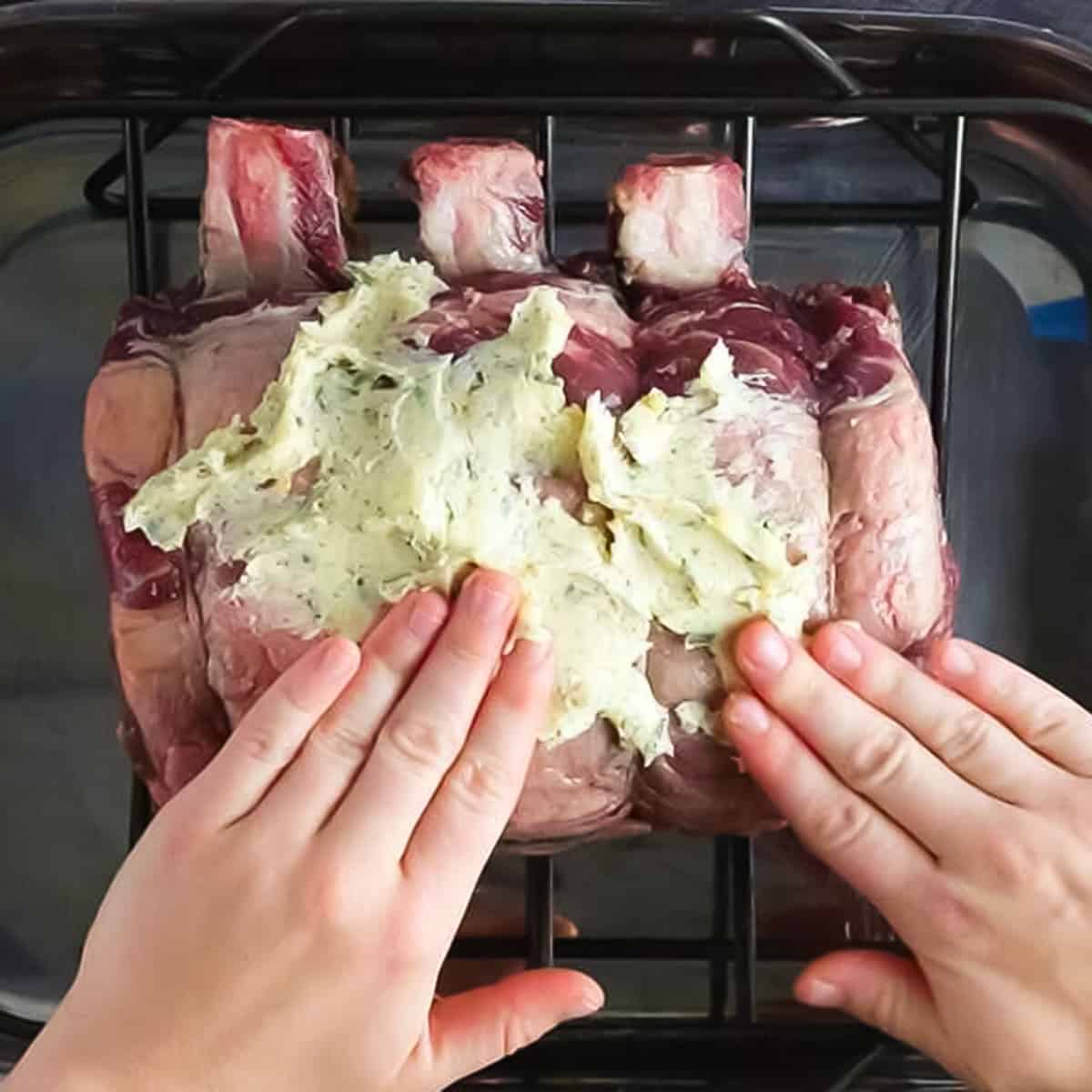
Prime Rib Rub
Equipment
Ingredients
- 1 stick Salted butter - softened
- 2 Tablespoons Garlic powder
- 1 Tablespoon Fresh rosemary
- 1 Tablespoon Fresh thyme
- 1 Tablespoon Black pepper
Instructions
- Soften the butter on the counter or by setting it under a hot glass, and chop the herbs. When softened, combine butter, garlic powder, herbs and pepper in a bowl and mix to combine.1 stick Salted butter,2 Tablespoons Garlic powder,1 Tablespoon Fresh rosemary,1 Tablespoon Fresh thyme,1 Tablespoon Black pepper
- Spread the butter rub over the meat, making sure to cover all sides of the roast.
- Prepare the roast, and serve! Save any spare rub (that hasn't been in contact with the meat!) for spreading on toast, vegetables, and more!
Notes
- Fresh herbs are ideal, but if you're in a pinch, dried herbs will work too! Just limit the amount to about half, as dried herbs are more potent and too many can quickly become overpowering.
- I prefer to use salted butter for a more flavorful rub. If using unsalted butter, add a little salt to the mix.
- Make extra, and set aside a portion to store. This butter rub is essentially herb butter, and tastes incredible used in all sorts of ways! I like to add a little to the pan before cooking up sandwiches, or add it on top of mashed potatoes.
- Spare butter can be stored in a container in the fridge or wrapped up into a log shape using plastic wrap.
- Feel free to mix and match the herbs in this rub. You may prefer more thyme, more rosemary, or a mix of sage!



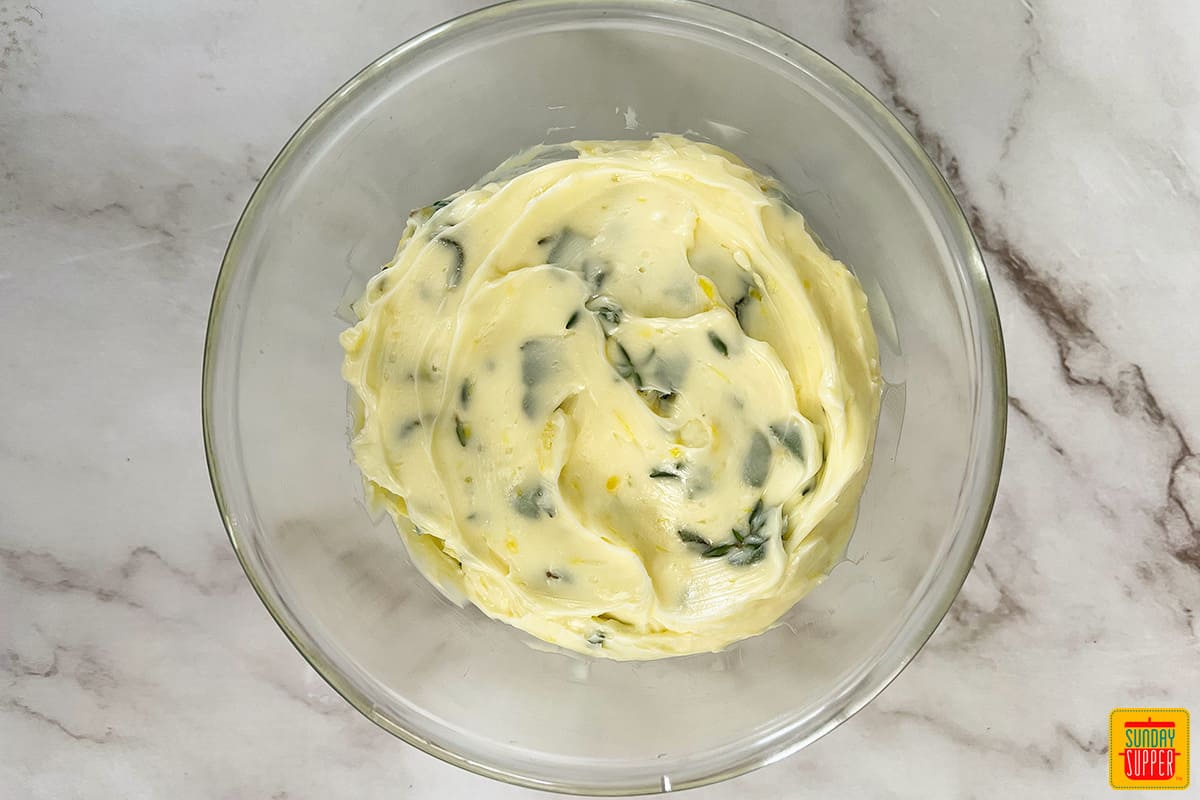
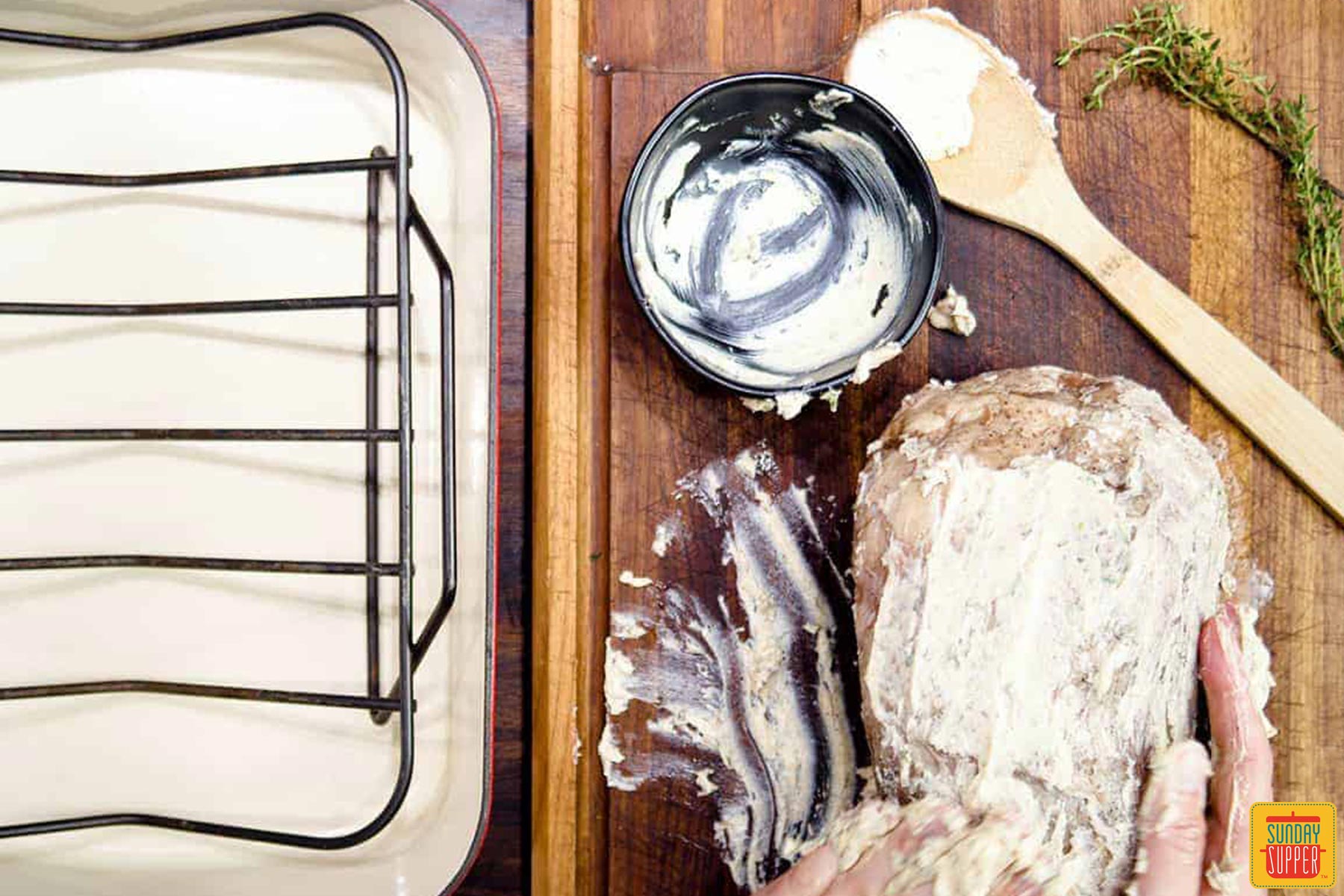
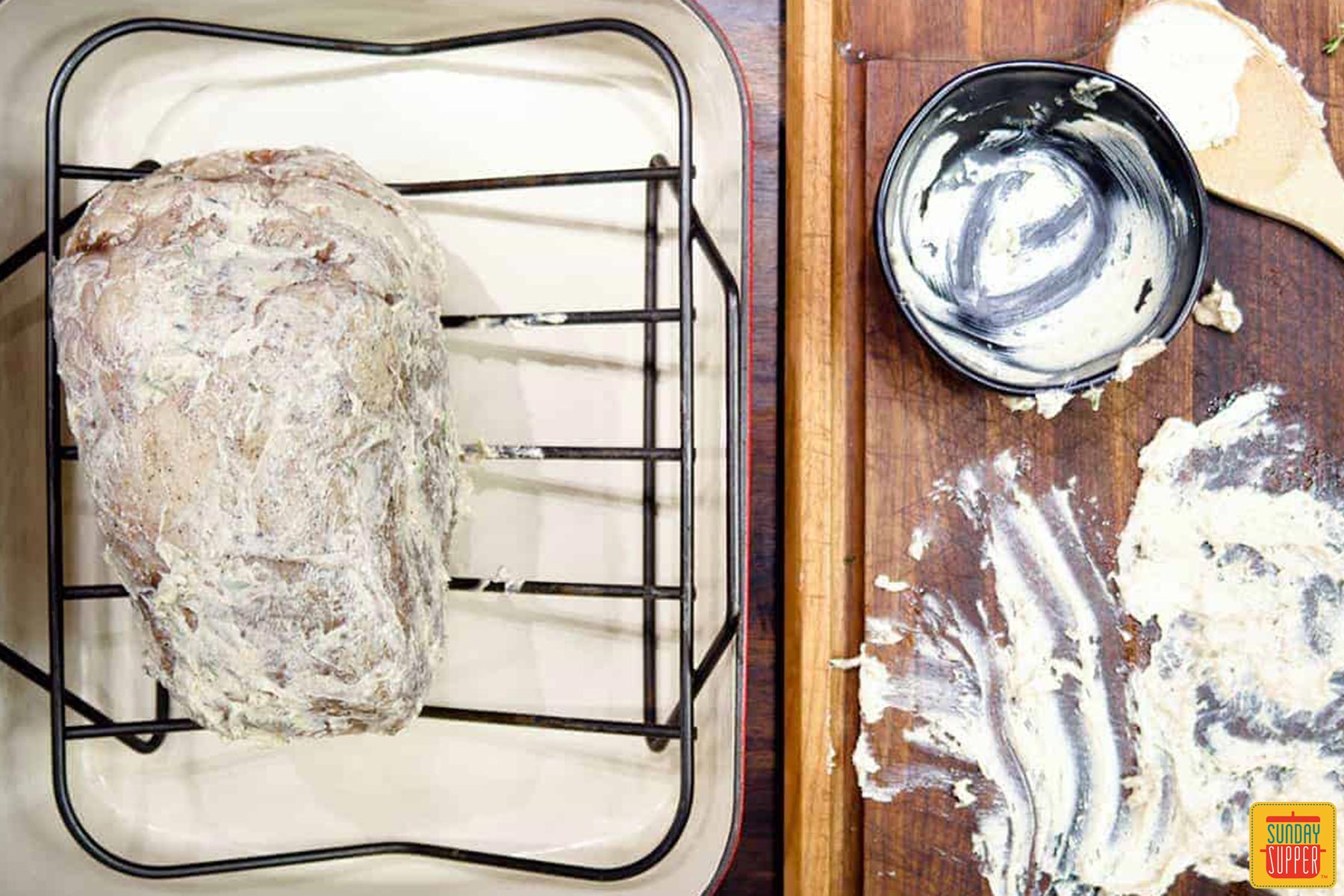
Comments
No Comments